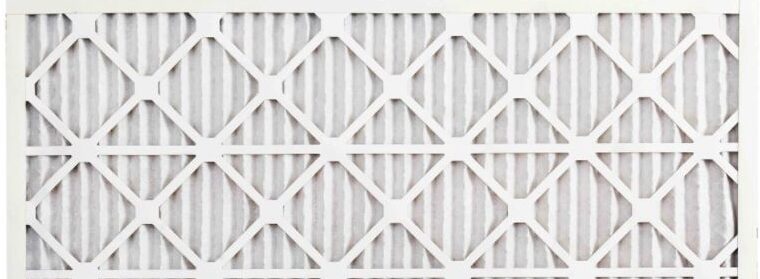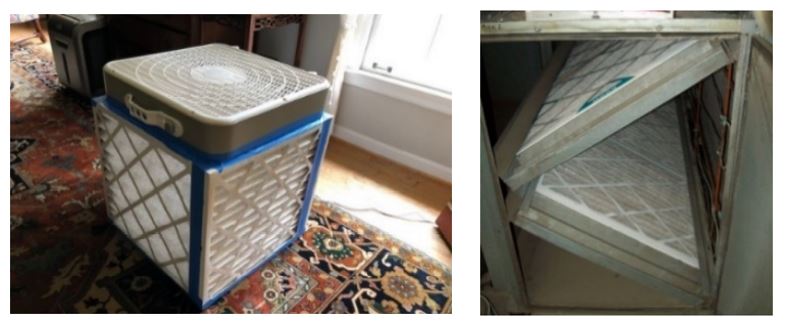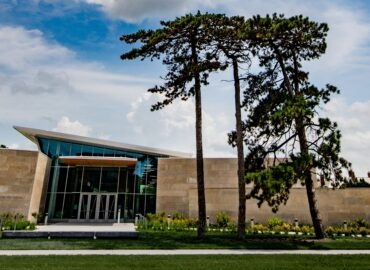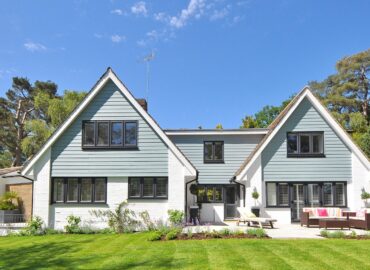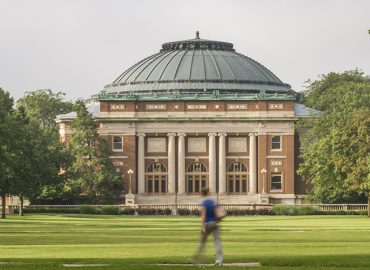Overview: Increasing filtration of recirculated air improves indoor air quality and reduces airborne pathogens by capturing finer particles in the air. In general, increasing filter efficiency increases pressure drop, slightly increasing the energy consumption of HVAC fans or reducing airflow output for fans that can’t adjust speed. Portable filters clean air at the source, providing more air cleaning efficiency than central air units alone. In general, the higher the filtration efficiency, the better the air quality, and the higher the energy impact.
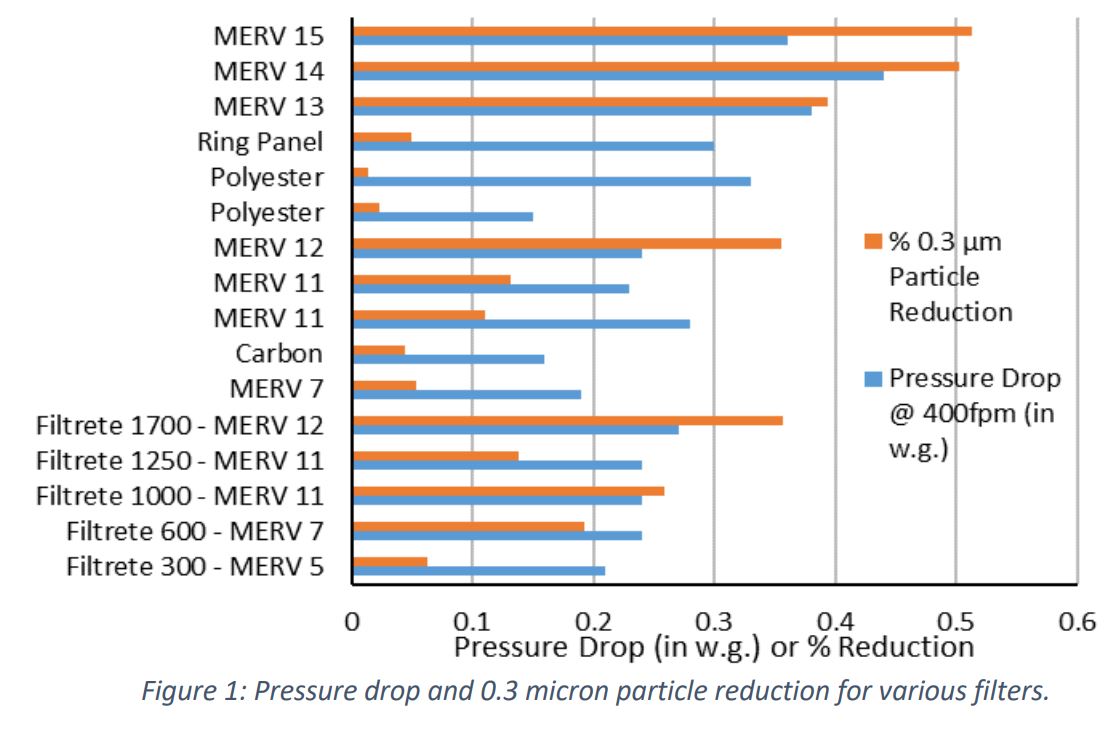 Removes, Dilutes, or Inactivates Pollutants: Filtration captures and removes particulates from the air. This can also reduce pathogens by trapping the particles they are carried on. Most air handling systems have a MERV 8 filter for protection of the fans and conditioning coils that do not capture finer particles. MERV 13 is expected to capture about 75% of particulates in the size range considered to carry respiratory pathogens, 0.3 to 1.0 microns. A MERV 16 filter captures 95%-99% of these particulates, and HEPA filters can capture up to 99.95% and is better at capturing even smaller particles. Filters do not remove VOCs or other gases.
Removes, Dilutes, or Inactivates Pollutants: Filtration captures and removes particulates from the air. This can also reduce pathogens by trapping the particles they are carried on. Most air handling systems have a MERV 8 filter for protection of the fans and conditioning coils that do not capture finer particles. MERV 13 is expected to capture about 75% of particulates in the size range considered to carry respiratory pathogens, 0.3 to 1.0 microns. A MERV 16 filter captures 95%-99% of these particulates, and HEPA filters can capture up to 99.95% and is better at capturing even smaller particles. Filters do not remove VOCs or other gases.
Harmful Byproducts: Increasing filtration will not create harmful byproducts and cannot introduce pollution like increasing outdoor airflow or adding electronic air cleaners can. Thus, increasing filtration is the best-known way to improve indoor air quality without introducing other potential contaminants.
Added Energy: Increased filtration efficiency can increase pressure drop in fan systems, which will increase the power the fan needs to draw. Figure 1 shows a sample of residential filters. Commercial pressure drop comparisons would be similar. For a 10 sf duct with a flow velocity of 300 fpm (a common design flow rate) the added fan power is about 0.06 HP to 0.12 HP, depending on the increase in performance and pressure drop. On an annual energy basis, this is an additional $10 to $20 per year. HEPA filtration is not shown, but in general is only applicable to specially built HVAC systems due to high pressure drop. In-room HEPA filters are the best means to add HEPA filtration to an existing building, and usually have small fans that use fractional kW power draws amounting to a few dollars per school year in operation per unit.
The following methods reduce the energy impact of added filtration.
- The example below (left) from greenbuildingadvisor.com is a good example of using a box fan and four MERV 13 filters to add filtration capacity to a room. Similar designs have been used for classrooms. The large filtration area increases the volume of air that can be treated while decreasing velocity, allowing for quieter fans to be used.
- For large central air handlers, the filter racks may be able to be modified, if there’s space, to take higher MERV filters in a zig-zag pattern that increases surface area to reduce added pressure drop. An example is shown below (right) from a recent SEDAC assessment. It is important in filtration banks to ensure there is proper sealing around and between filters to prevent bypass to maintain high filtration efficiency.
- Install filters with electret media: fibers that hold a light charge to attract particulates out of the air. This increases the MERV performance of the filter without increasing the pressure drop.
Install Cost: Increasing filter efficiency will increase costs by anywhere from a few cents per filter to a couple dollars. For larger schools, MERV 13 filtration may increase filter purchasing costs by a few hundred to couple thousand dollars per year, depending on the number and MERV rating of the filters. An additional cost factor to consider is that higher efficiency filters may become clogged with dust more quickly and require more frequent replacement. If HVAC systems need to be modified to accept higher efficiency filters without impacts airflow, costs can reach into the $10,000 to $100,000 range, depending on number of systems and modifications needed. In-room air filters usually cost between $200 to $500 per unit, depending on the filter type and capacity.
Looking Beyond the Pandemic
Filtration is a proven air cleaning technology that can remain after the pandemic to improve overall building air quality for years to come, with proper maintenance. New recommendations are to maintain 6 air changes per hour in classrooms through a combination of fresh and cleaned air to reduce the risk of airborne disease transmission.4 To ensure the proper performance of any improved central air filtration system, ensure filter bypass is prevented by sealing individual filter units together and gasketing access panels to filter banks.
For in-room filtration units, pay attention to sound ratings. If a unit is too loud and interferes with lessons, it would be used while the room is occupied, defeating the purpose of any in-room filtration units. Sound levels between 30 and 50 decibels are recommended.
Finally, use this calculator to help determine the size and number of portable air cleaners for your classrooms or other spaces.


